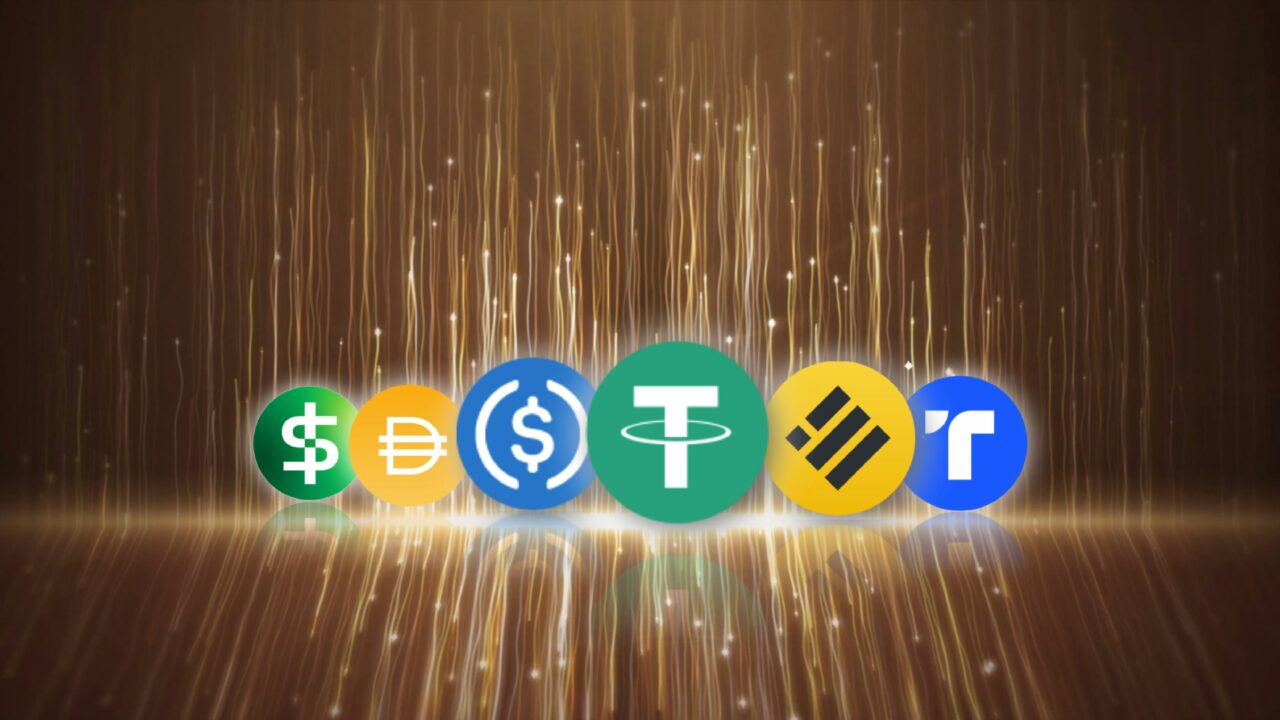The Genius Act and The Rise of Federally Regulated Cryptocurrency
By: Kira Johnson

I. Overview
On July 18, 2025, President Trump signed the Guiding and Establishing National Innovation for US Stablecoins Act, known as the GENIUS Act (the “Act”), into law.[1] Now, federal and state regulators are tasked with creating the rulemaking necessary to implement the Act, including capital requirements and risk management policies.[2] The GENIUS Act will become effective on the earlier of two dates: (1) eighteen months after the date of enactment or (2) 120 days after a primary federal payment stablecoin regulator issues final implementing regulations.[3]
The Act provides a regulatory framework for “payment stablecoins.” Stablecoins are cryptocurrency and, as such, offer the benefits of blockchain technology, including transparency for each transaction and the ability to send money to others without using traditional banks as middlemen.[4]
However, payment stablecoins differ from traditional cryptocurrency, as they must be linked to a liquid reserve asset, such USD, on a one-to-one ratio.[5] This link to government-issued currency aims to avoid the volatility commonly associated with cryptocurrencies. Although not backed by Federal Deposit Insurance Corporation (FDIC) insurance, the Act states that each issuer of payment stablecoins must keep accurate reserves that are segregated from the issuer’s corporate assets. Therefore, in theory, each stablecoin issuer will have an accurate, segregated cash reserve of USD for each stablecoin issued.[6]
The crux of the GENIUS Act is that, although legally obligated to have accurate, segregated reserves, these issuers are not the owners of the stablecoins they issue. Once a person buys a stablecoin, that person is the owner, not the issuer. The Act makes this clear through heavy regulation for issuers and protection of owners in the event an issuer files for bankruptcy.
II. Issuers
The Act primarily regulates payment stablecoin issuers, called Permitted Payment Stablecoin Issuers (“PPSIs”).[7] In order to qualify, each PPSI must apply and receive approval from an appropriate regulatory authority.[8]
The appropriate federal payment stablecoin regulator must approve applications from those institutions insured by the FDIC, such as banks and savings associations.[9] These federal regulators include the National Credit Union Administration and the Stablecoin Certification Review Committee, composed of the Secretary of the Treasury, the Chair of the Federal Reserve Board, and the Chair of the FDIC. The Stablecoin Certification Review Committee will also be tasked with approving the state regulatory regimes.[10]
The Office of the Comptroller of the Currency (OCC) must approve applications from nonbanks, uninsured national banks, and federal branches of foreign banks.[11] Additionally, the relevant state payment stablecoin regulator can be an alternate approval source for applications from nonbanks that issue payment stablecoin in aggregate amounts less than $10 billion.[12]
Each PPSI will publicly disclose how the stablecoins are redeemed for fiat in a timely manner, along with any associated fees.[13] Additionally, each month the PPSI will disclose the makeup of its reserves on its website. The chief executive officer or the chief financial officer of each PPSI must submit certification of accuracy for each monthly disclosure.[14]
Additionally, the Act subjects stablecoin issuers to the Bank Secrecy Act, requiring anti–money laundering and sanctions compliance programs. It authorizes the Treasury Department to address sanctions evasion and money laundering involving stablecoins. Issuers must maintain the technical capacity to seize, freeze, or burn stablecoins pursuant to lawful orders.[15]
III. Bankruptcy Provisions
Perhaps most controversially, the Act amended the Bankruptcy Code, such that, in the event of a PPSI’s bankruptcy filing, stablecoin owners are prioritized.[16] The Act amended Title 11 of the U.S. Code such that reserve assets are not property of the bankruptcy estate.[17] Therefore, the reserves are not available for any unsecured creditor, prioritizing and reimbursing stablecoin owners first.[18]
Although PPSIs are legally obligated to keep accurate, segregated reserves, in the event those segregated reserves are unavailable, stablecoin holders are granted the highest priority, elevating their claims above even administrative expenses.[19] Unlike banks, where the FDIC will insure each person up to $250k, PPSIs do not have government insurance; hence, stablecoin owners will only receive what is actually left in the reserve.[20] If PPSIs engage in fraudulent activity, the stablecoin owners will be open to loss, although far less than traditional cryptocurrency.[21]
IV. Conclusion
The GENIUS Act seeks to establish the first comprehensive federal framework for regulating cryptocurrency through payment stablecoins. By subjecting PPSIs to the Bank Secrecy Act, requiring monthly disclosures, and mandating technical compliance mechanisms, the Act integrates stablecoins into existing financial oversight structures. The Act also amends bankruptcy law to prioritize stablecoin holders’ claims above those of secured creditors and administrative expenses. These provisions mark a significant shift in how U.S. law treats cryptocurrency, combining federal oversight with the unique operational features of blockchain-based assets.
Link to image source:
https://unsplash.com/photos/a-group-of-numbers-iNOavZh6dQ8
[1] White House, Fact Sheet: President Donald J. Trump Signs GENIUS Act into Law (Jul. 18, 2025), https://www.whitehouse.gov/fact-sheets/2025/07/fact-sheet-president-donald-j-trump-signs-genius-act-into-law/.
[2] GENIUS Act, Pub. L. No. 119-27, 139 Stat. 419, 459 (2025).
[3] GENIUS Act, Pub. L. No. 119-27, 139 Stat. 419, 466(d) (2025).
[4] GENIUS Act, Pub. L. No. 119-27, 139 Stat. 419, 453 (2025).
[5] White House, Fact Sheet: President Donald J. Trump Signs GENIUS Act into Law (Jul. 18, 2025), https://www.whitehouse.gov/fact-sheets/2025/07/fact-sheet-president-donald-j-trump-signs-genius-act-into-law/
[6] GENIUS Act, Pub. L. No. 119-27, 139 Stat. 419, 456 (2025).
[7] GENIUS Act, Pub. L. No. 119-27, 139 Stat. 419, 420-22 (2025).
[8] Id.
[9] See Chris Daniel et al., The GENIUS Act: A Comprehensive Guide to US Stablecoin Regulation, Paul Hastings LLP: Client Alert (July 18, 2025), https://www.paulhastings.com/insights/crypto-policy-tracker/the-genius-act-a-comprehensive-guide-to-us-stablecoin-regulation.
[10] Kristin Boggiano et al., Stablecoins and the GENIUS Act: What You Need to Know, DLA Piper: Client Alert (July 24, 2025), https://www.dlapiper.com/en/insights/publications/2025/07/stablecoins-and-the-genius-act-what-you-need-to-know.
[11] Carl Fornaris et al., Real GENIUS: Landmark U.S. Federal Payment Stablecoin Legislation, Winston & Strawn LLP (July 21, 2025), https://www.winston.com/en/blogs-and-podcasts/non-fungible-insights-blockchain-decrypted/real-genius-landmark-us-federal-payment-stablecoin-legislation.
[12] Id.
[13] GENIUS Act, Pub. L. No. 119-27, 139 Stat. 419, 426 (2025).
[14] Id.
[15] GENIUS Act, Pub. L. No. 119-27, 139 Stat. 419, 421 (2025).
[16] GENIUS Act, Pub. L. No. 119-27, 139 Stat. 419, 458-59 (2025).
[17] Id.; Carl Fornaris et al., Real GENIUS: Landmark U.S. Federal Payment Stablecoin Legislation, Winston & Strawn LLP (July 21, 2025), https://www.winston.com/en/blogs-and-podcasts/non-fungible-insights-blockchain-decrypted/real-genius-landmark-us-federal-payment-stablecoin-legislation.
[18]Carl Fornaris et al., Real GENIUS: Landmark U.S. Federal Payment Stablecoin Legislation, Winston & Strawn LLP (July 21, 2025), https://www.winston.com/en/blogs-and-podcasts/non-fungible-insights-blockchain-decrypted/real-genius-landmark-us-federal-payment-stablecoin-legislation.
[19] Id.
[20] White House, Fact Sheet: President Donald J. Trump Signs GENIUS Act into Law (Jul. 18, 2025), https://www.whitehouse.gov/fact-sheets/2025/07/fact-sheet-president-donald-j-trump-signs-genius-act-into-law/.
[21] Id.

Leave a Reply
You must be logged in to post a comment.